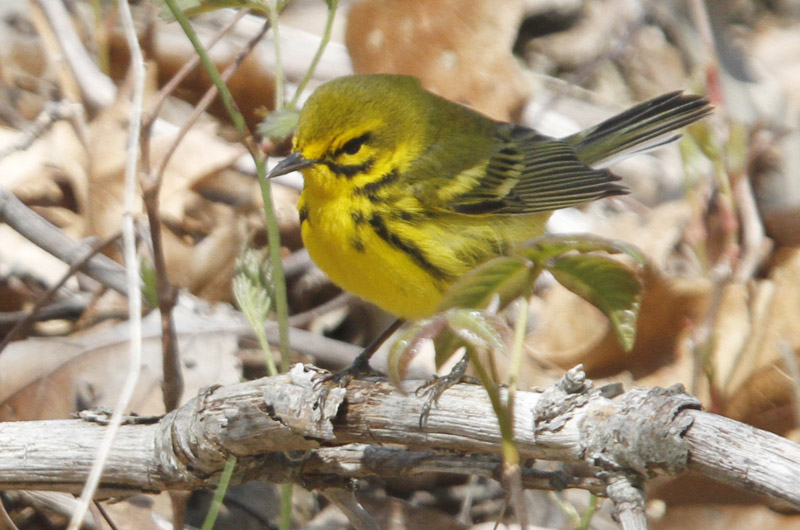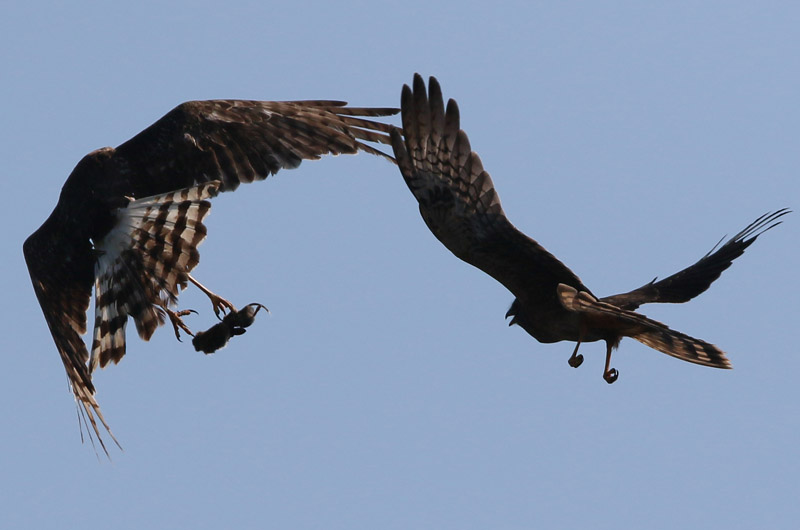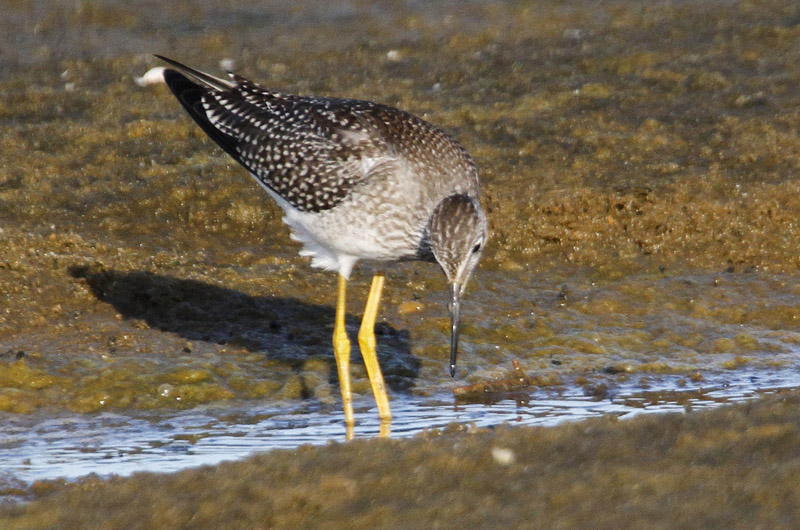Young ospreys may end up in unusual locations at this time of the year. Maybe one is perched on your roof, on a fencepost or even on the ground. They may stay there for days, and they will be calling frequently and loudly, but eventually they will fly away.
According to Gus Ben David, who has been working with osprey for almost 50 years and is the only person on the Island authorized by the state and federal governments to handle and rehabilitate these birds, landing in these unusual locations is a normal part of a young osprey’s development. Parents may bring them food, but if not they will stay there until they get hungry enough to fly off and learn to hunt on their own.
“This is part of the normal fledging process. Unfortunately, at least 80 per cent of these young fledglings will not survive through their first winter,” Mr. Ben David said.
Mr. Ben David will rehabilitate any ospreys that are so weak that he can catch them. The tricky part is catching them, and here he works closely with the electric company, Eversource. They generously provide the equipment that he needs to catch them. Then comes the rehabilitation and feeding the birds until they gain enough strength to be released. Island veterinarians donate medicines and medical supplies that these young birds need. Mr. Ben David successfully rehabilitated and released two young ospreys in 2015.
As I reported in a July 22 article, an adult osprey in Lobsterville was observed with its talons completely entangled with a snarl of monofilament fishing line. Mr. Ben David responds to every such situation, evaluates whether it is possible to capture the bird, and frequently monitors the situation until the bird can be captured. Unfortunately, this bird disappeared before it weakened enough to be caught.
Bird Sightings
Mr. Ben Davis also mentioned that this is the first year in a long time that eastern bluebirds have not nested in his yard. There have only been a few reports of bluebirds this season, and I heard and saw my first bluebirds of the season near Watcha Pond on July 28. It is not all bleak news, however, as Suzan Bellincampi reports that nearby Felix Neck had two pairs of nesting bluebirds which fledged six youngsters.
Allan Keith reports that he observed a brant that was hanging out with a flock of four Canada geese at his farm on July 23. That flock stayed around for a few days. He also mentions that the chipping sparrows and phoebes nested successfully, as he has youngsters hanging out near his house.
The Chilmark Community Center’s weekly Tuesday morning bird walk is led by Susan Whiting. On July 26, they ventured to the tidal flats on Tisbury Great Pond and found a plethora of waterbirds. Their best bird was a royal tern. This is the third sighting of this large tern this July. They also found a white-rumped sandpiper and a dunlin in full breeding plumage. Both species seem to be early arrivals this year as their normal arrival dates are in mid-to-late August.
Ken Magnuson visited the Tisbury Great Pond tidal flats on July 29. Amongst the shorebirds he found were eight red knots. Some were showing vestiges of the reddish undersides of their breeding plumage. Lanny McDowell, Warren Woessner and Pete and George Gilmore were birding nearby Black Point Pond and witnessed a food transfer between two northern harriers. Most likely it was an adult female providing food to her not quite yet self-sufficient fledgling.
Tisbury Great Pond is the place to go this week. My Saturday morning bird tour went to Sepiessa where we found about 20 semipalmated plovers, two short-billed dowitchers, and one lesser yellowlegs on July 30. Earlier in the morning we stopped at the state forest headquarters and found a veery, two prairie warblers, a pine warbler and many chickadees. Given the proximity of these songbirds and the unusual location for a veery, I am thinking that they are southbound migrants joining with our chickadees as they travel through the woods.
Further evidence for southbound songbirds comes from Nantucket, where Skyler Kardell spotted a lark sparrow at the Cranberry Bogs on July 30. The closest this sparrow breeds is in northern Ohio, and the website ebird shows only two other July sightings in coastal New England since 2000. This species is always unusual, but is more likely later in the season.
Jeff Bernier found a green heron patiently stalking a small fish in Katama Bay on July 29. It caught the fish and carried away from the water’s edge before consuming it. No escaping back into the water for that fish.
On August 1 (wow, already!) Steve Allen found a juvenile black-crowned night-heron, a greater yellowlegs and a willet at Felix Neck.
Finally, Paulette Silve-Souza found a juvenile red-tailed hawk that is continually squawking. Just as with the osprey discussed above, this is typical behavior of a young, recently fledged hawk, constantly begging its parents to bring more food. Fortunately, this constant calling is a relatively short-lived phenomenon as the bird will soon learn to hunt for its own food.
Southward migrating shorebirds are passing through and the songbird migration is beginning. Go out looking for birds and please be sure to report your sightings to birds@mvgazette.com.
Robert Culbert leads Saturday morning guided birding tours and is an ecological consultant living in Vineyard Haven.







Comments
Comment policy »